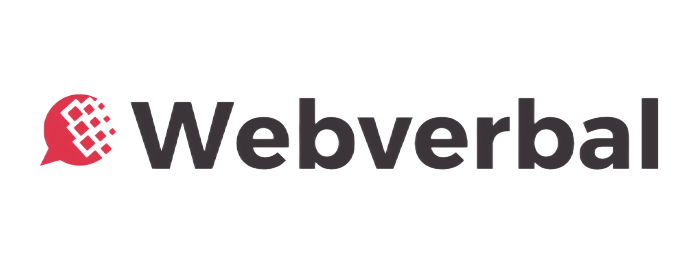Table Of Content
Over 5,000 startups in India shut down in 2024, with Maharashtra leading at 929 closures. Behind each closure lies a founder who raised money, built a team, and believed they’d cracked the market.
In India, 90% of startups fail within their first five years—a HBR statistic that’s remained brutally consistent for the past decade.
But here’s what makes this tragedy more painful: 42% of these failures happen due to misreading market demand, not because of funding shortages or technical incompetence.
After analyzing 200+ failed Indian startups and interviewing 50+ founders, I’ve identified the pattern: The startups that fail aren’t building bad products—they’re building products for customers who don’t exist.
The “IIT-MBA Trap” Killing Indian Startups

The core problem is Cognitive Privilege.
Most successful founders come from India’s top 5% (English-speaking, metro-living). They build products for consumers they understand: themselves.
But India’s market is distributed across 650 million middle-class consumers whose psychology is completely different.
The “Silicon Valley vs. Bharat” Assumption Trap
| The Founder Assumption | The Bharat Reality |
| “If I would use it, they will too” | False. You value time; they value money. |
| “Convenience always wins” | False. Trust matters more than speed. |
| “Better product = Market success” | False. Social validation drives decisions. |
| “Price sensitivity is about affordability” | False. It’s about “Deal Satisfaction” (feeling smart). |
Case Study 1: TinyOwl (The “Uber for Food” Failure)

How ₹200 Crores Burned by Solving the Wrong Problem
In 2014, TinyOwl raised massive capital to become India’s food delivery king. By 2016, they were gone.
The Fatal Behavioral Blind Spot:
TinyOwl targeted Individual Convenience (young professionals ordering lunch).
- The Reality: Food ordering in India is a Collective Decision. The person ordering isn’t usually the decision-maker.
- The Fix (Swiggy/Zomato): They solved “Social Acceptability.” They normalized ordering food as a family activity, not just a bachelor’s hack.
Case Study 2: Grofers (The Near-Death Pivot)
How Solving Rich People’s Problems Almost Killed Them
In 2015, Grofers promised 90-minute delivery. They assumed Indians wanted speed. They nearly went bankrupt.
The Middle-Class Reality Check:
- Shopping is Social: Indians like inspecting vegetables. “Fresh” means “I picked it,” not “You delivered it.”
- The Pivot: They shifted from “Hyper-local Speed” to “Monthly Savings” (Blinkit eventually solved the speed issue, but only after cracking the inventory model).
- The Lesson: They stopped competing on Convenience and started competing on Smart Shopping.
The 5 Fatal Behavioral Blind Spots
The Psychological Reasons Why 90% Fail
1. Individual vs. Collective Decision Architecture
- Assumption: Consumers make independent choices.
- Reality: 67% of Indian households involve 3+ people in significant purchases. If your UI doesn’t allow for “screen sharing” or easy consensus, you fail.
2. Convenience vs. Cultural Comfort
- Assumption: Faster is better.
- Reality: Cultural fit trumps speed. “Uber for Maids” failed because hiring domestic help is a trust-based relationship, not a transaction.
3. Price Sensitivity vs. Value Psychology
- Assumption: Indians buy the cheapest option.
- Reality: Indians buy the “Best Deal.” We will pay premium prices if we feel we are getting 2x value. We won’t pay ₹10 if we feel ripped off.
4. Brand Trust vs. People Trust
- Assumption: Ads build trust.
- Reality: People build trust. Most successful Indian startups (like Meesho) grew through WhatsApp groups and personal referrals, not Google Ads.
5. Urban vs. Bharat Psychology
- Assumption: What works in Indiranagar works in Indore.
- Reality: Tier-2 markets require different UX (Voice search, Vernacular) and different pricing models (Cash flow dependent).
Founder’s Checklist: The 6-Step “Reality Check”
Take this inventory before you write a single line of code.
- [ ] The Privilege Check: Does your target user have the same income/education as you? If no, your intuition is wrong.
- [ ] The “Mom Test”: If you explained this product to your customer’s mother-in-law, would she understand the value?
- [ ] The 5-Why Drill: Why do they want this? (Ask 5 times until you hit the emotional root).
- [ ] Behavioral Observation: Have you watched 20 users solve this problem without your product?
- [ ] Trust Mapping: Who does your customer trust? (A neighbor? A local shopkeeper? An influencer?).
- [ ] The Stress Test: Does your pricing match their cash flow cycles (e.g., beginning of month salary)?
Conclusion: Empathy is the Moat
The founders who survive don’t just build better products. They build better Customer Empathy.
Snapdeal failed because they optimized for transaction volume (More sellers).
Flipkart won because they optimized for Purchase Confidence (Flipkart Assured).
In India, psychology is your biggest competitive moat.
(Struggling to find Product-Market Fit in Bharat? [Book a Behavioral Audit Call])
Frequently Asked Questions (FAQ)
While capital is often blamed, 42% of failures are due to “No Market Need”—which essentially means the founder misread consumer psychology and built a solution for a problem that didn’t exist or wasn’t urgent.
Cognitive Privilege. They assume the rest of India thinks and spends like they do. They often build “Convenience” products for a market that prioritizes “Value” and “Trust.”
Tier-2 consumers rely heavily on Social Proof and Assisted Commerce. They prefer “Chat-to-Buy” or speaking to a human over fully automated self-serve interfaces.
Yes. Startups that focus on Community Building (WhatsApp, Offline networks) often have lower Customer Acquisition Costs (CAC) and higher retention than those burning cash on ads.




